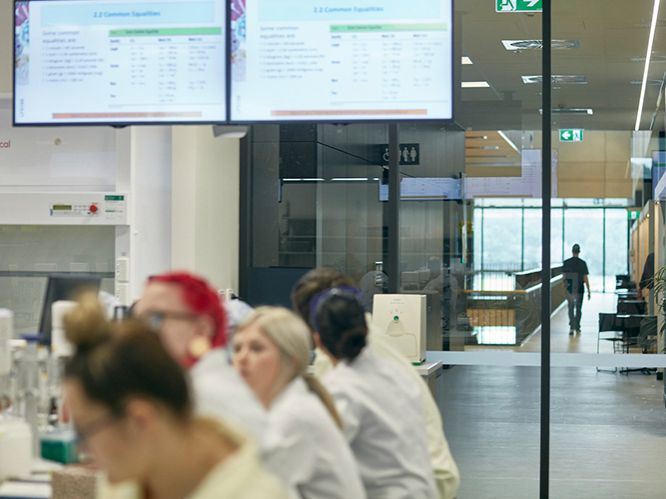Evolving R&D facilities — what’s next?
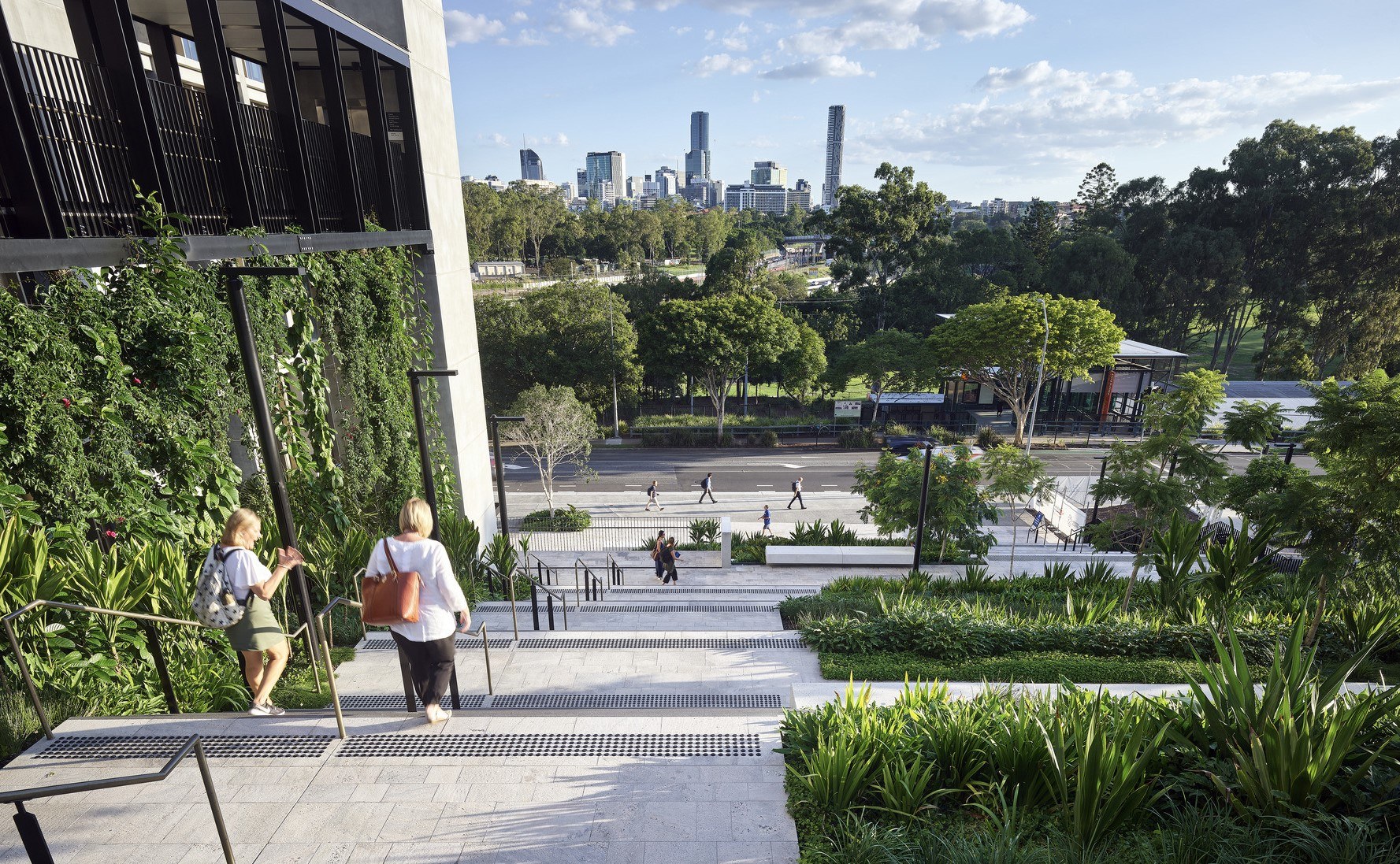
Precision medicine, AI-powered discoveries and looming patent expirations on top-selling Big Pharma drugs are shaking up the life sciences industry. To meet these changing demands, research and development (R&D) facilities will have to evolve quickly.
By Yuru Ding, Researcher
Top image: Herston Quarter, Brisbane, Australia
It’s a time of fundamental change in the life science industry and to stay ahead of the curve, organisations need to embrace a paradigm shift and rethink conventional lab design. Three key factors are driving this change: Cell and Gene Therapy (CGT) technology, AI-driven drug development and a need for hyper-speed innovation as 70% of America’s blockbuster drugs lose patent protection this decade.
Scientists still believe that physical lab spaces are important, even in the age of computer-driven innovation. While AI is revolutionising the life sciences, fostering efficient creativity and attracting top talent requires a focus on the human element within the lab itself.
Richard Li, a biomedical scientist at Caltech University in the US, highlights how a human-centric approach to lab design embracing natural light, collaborative spaces and areas for social connections that spark informal, cross-discipline discussions can foster innovation and attract top talent in a tech-driven environment.
CELL AND GENE THERAPY IN THE SPOTLIGHT
Sixteen of the world’s top 20 biopharma companies are embracing CGT with America’s Food and Drug Administration (FDA) set to approve up to 20 CGT products annually starting in 2025.
Currently, Big Pharma’s R&D model is built for developing small-molecule drugs through a linear process from discovery to approval. This approach struggles with the complexities of CGT. CGT’s specialised needs, focused on cultivating cells or modifying genes rather than large-scale synthesis, necessitate a new way of working with integrated systems that streamline development and production and require specialised skills and collaboration. The push for personalised treatments like CGT is driving R&D labs to form cost-effective, agile partnerships.
So, how can R&D facilities evolve while ensuring research spaces remain essential to assisting biotech start-ups and large pharmaceutical companies in innovating?
The following three strategies demonstrate how traditional R&D can not only weather disruption but actively harness it, forging a path to thrive in the face of patent cliffs and biotech currents. By strategically designing R&D facilities, we can unlock these opportunities.
Action 1: Optimising R&D facility location
Gone are the days of isolated labs – R&D thrives in urban ecosystems. It’s not just about convenience but about being immersed in a vibrant network akin to Kendall Square – the heart of biotech and life sciences in the US, where labs teem with diverse ideas and scientists rub shoulders with university researchers.
This new reality is fuelled by proximity and collaboration with a diverse and deep talent pool. A prime example is the recent move by Vertex Pharmaceuticals, a leading life sciences company, from Cambridge to the thriving South Boston waterfront. This relocation places Vertex’s headquarters and R&D centre closer to Tufts University, a prestigious institution renowned for its biomedical research, and world-class hospitals, such as the Massachusetts General.

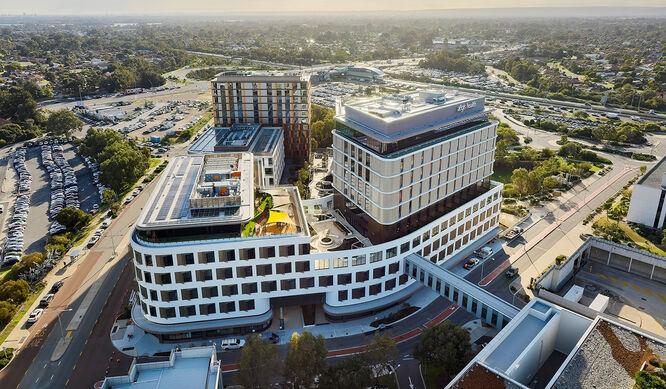
On the other side of the US, Gilead Sciences, a prominent American biopharmaceutical company known for its antiviral drugs, recently acquired a number of Bay Area biotech startups. These acquisitions, situated near the prestigious University of California in San Francisco, showcase the value of companies integrating with top institutions to fuel Big Pharma’s long-term R&D pipeline.
The future of R&D is flourishing in the heart of thriving cities.
Hassell’s Centre for Children’s Health Research in Australia exemplifies the importance of location for innovative research. Positioned between a hospital and a college, with the University of Queensland and Park Road Station nearby, the Centre is created to foster collaboration. The building’s vertical design, featuring communal spaces around an atrium, facilitates interaction among over 400 researchers, while its proximity to parklands, an exhibition centre and a museum enriches the research environment.
Action 2: Diversifying modular lab spaces
Traditional ‘one-size-fits-all’ labs can no longer handle the diverse demands of modern R&D. Modular labs, essentially prefabricated laboratories built from standardised components, can help foster speed-to-market and collaboration.
Failures in the process of new drug discoveries can have a disproportionate impact on overall pipeline progress and patient outcomes, underscoring the need for meticulous quality control and flexible spaces.
The use of AI tools that enable discoveries at lightning speed cross-pollinate with the knowledge of diverse experts such as data scientists, engineers and life scientists. Modular labs, essentially prefabricated laboratories built from standardised components, foster this collaboration.
These adaptable spaces can be easily reconfigured to suit different research needs and allow for rapid pivots as research progresses.
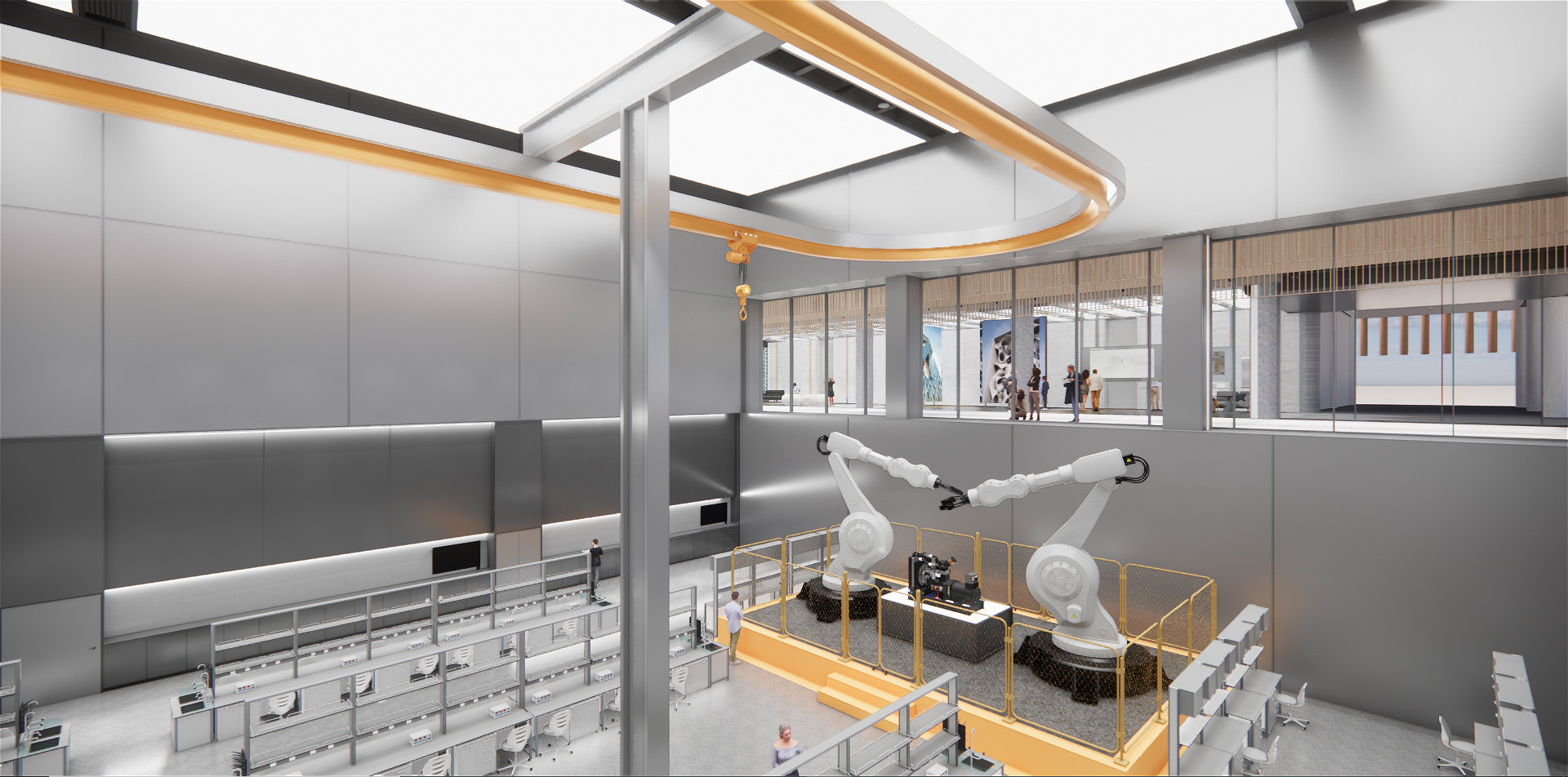

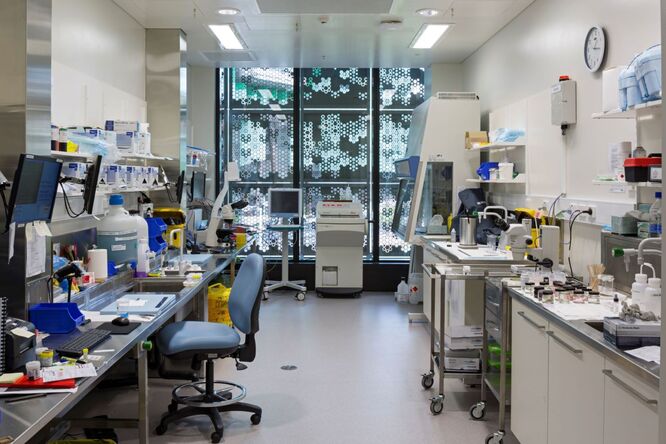
Nimble biotech start-ups which typically employ under 10 people are often squeezed by budgets before any findings go to pre-clinical trial stage, says Richard Li. That’s why having a workstation that’s efficient for testing different ideas quickly and precisely is crucial.
Biotech startups are fuelled by ‘successful failures,’ meaning that they learn from experiments that don’t yield the expected results but inform future iterations. For these start-ups, modular labs are a crucial enabler of engaging and testing ideas quickly as they can be reconfigured or expanded as needed.
The Incubator Lab at the Australian National University (ANU) in Canberra was built to scale a university-associated start-up, Samsara. This modular lab facilitates rapid innovation for Samsara’s groundbreaking work on recycling plastics into virgin chemicals for new plastic production. Once Samsara outgrows the space, the lab will be returned to the ANU, aligning with the ethos of adaptability and sustainable research practices.
Action 3: Enhancing wellbeing
Life-changing science rarely emerges from white boxes. To ignite the spirit of scientific discovery, prioritising people is key. This prioritisation manifests in flexible lab facilities, agile workspaces and human-centred dry lab routines, emphasising computational workflows used by scientists for analysis and research.
‘Out-of-the-box’ thinking is the lifeblood of scientific progress. But where do these sparks catch fire? Not surprisingly, in labs that feel good.
Life science R&D is intense, says Richard Li, draining both mind and body. Cramming scientists into sterile boxes breeds fatigue and stifles efficiency. Li highlights how some simple design interventions, such as abundant natural light and areas for casual conversation, can lift spirits in the middle of stressful projects.
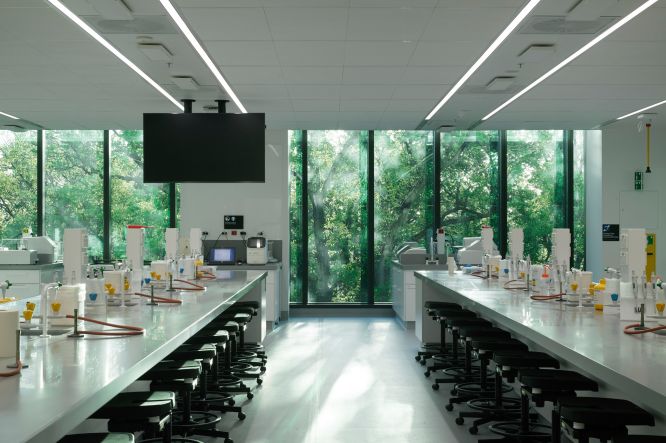
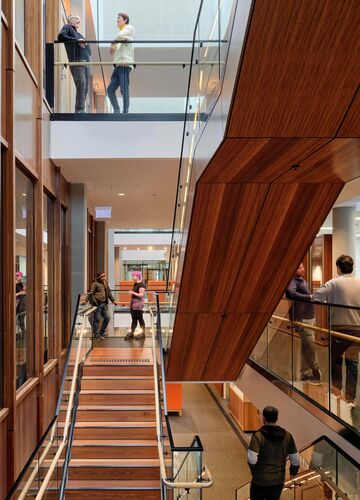
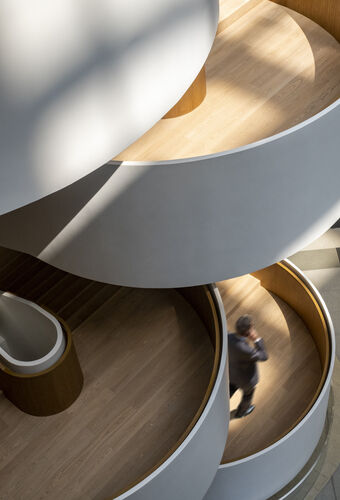
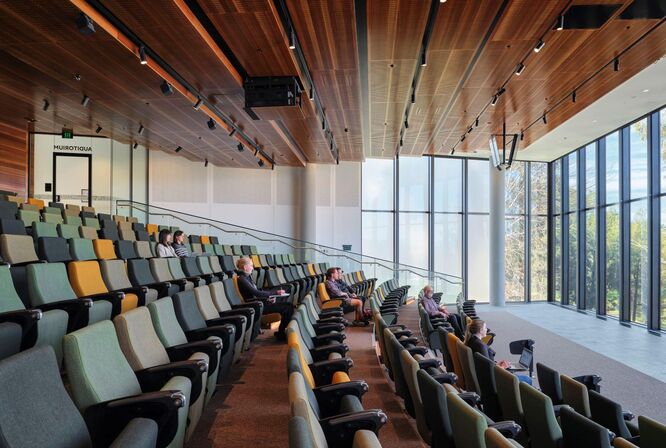
Conventional labs, with their utilitarian first mentality, often sacrifice health, comfort and aesthetics for supposed efficiency.
Hassell’s recently completed ANU Research School of Physics in Canberra departs from convention. The three-storey timber mullioned glass shell showcases ongoing research, providing visibility and connecting researchers with the surrounding school and landscape. Generous skylights bathe the atrium’s open staircases and collaborative terraces in natural light, animating the space and connecting labs to workspaces.
The building’s centrepiece is a 1,600-square-metre, state-of-the-art nanofabrication laboratory — a Southern Hemisphere first. This world-class facility, complemented by 22 ultra-stable labs, aims to propel groundbreaking research in quantum physics, photonics, and nanotechnology.
To bring it all together: strategic locations bridge human needs and serendipitous connections. Modular spaces, adaptable and communicative, fuel close partnerships and help propel the next commercialisation leap. And R&D facilities that prioritise the wellbeing of researchers will help them stay happier, healthier and more innovative.
If they build on all these foundations, R&D facilities across all innovation-driven industries, not just life sciences, stand to experience a vibrant future.

